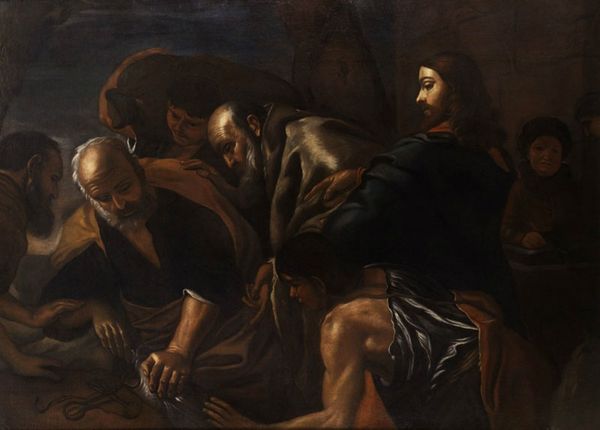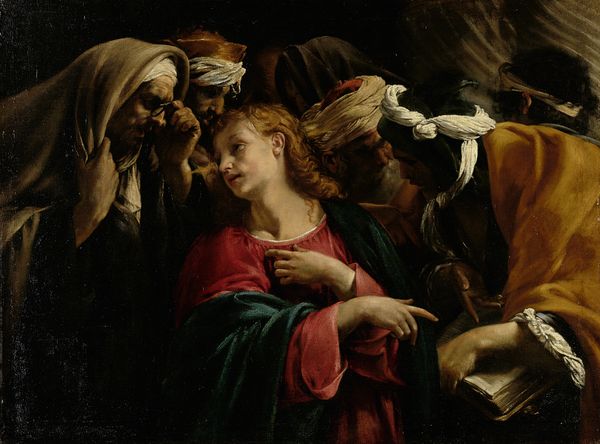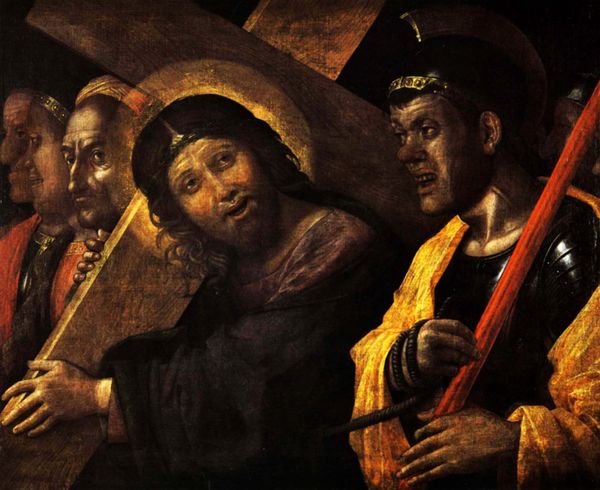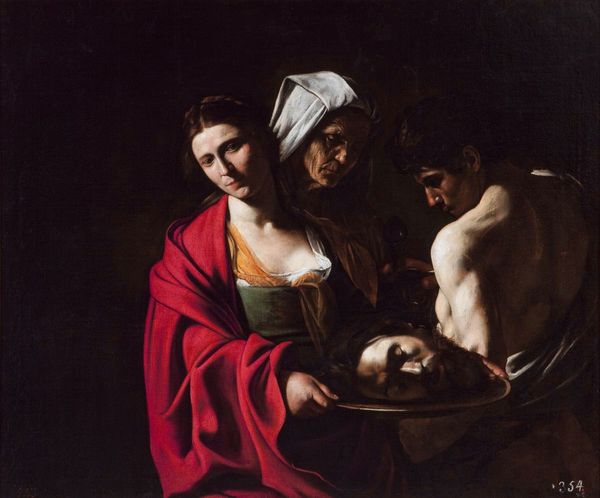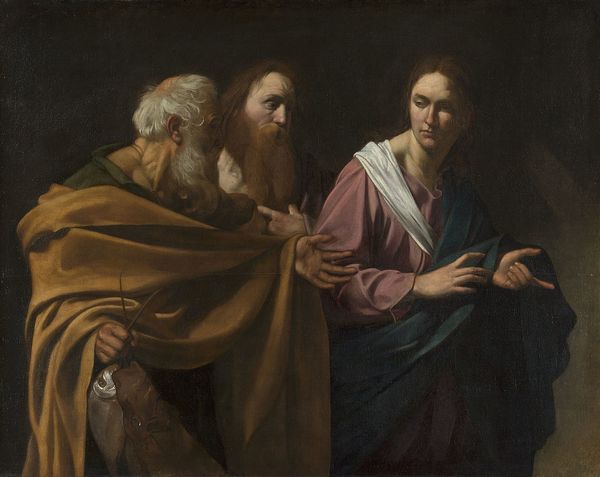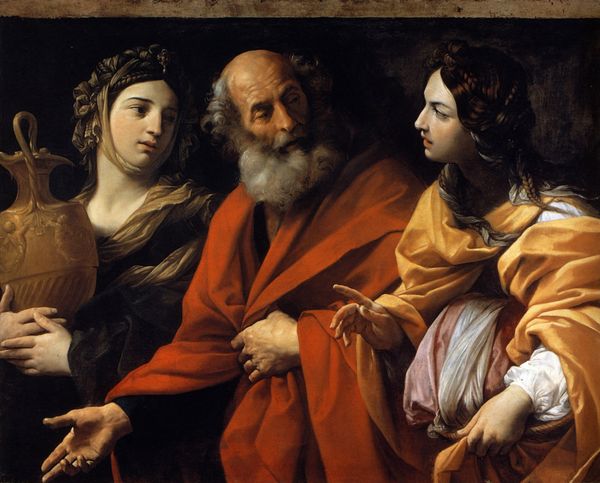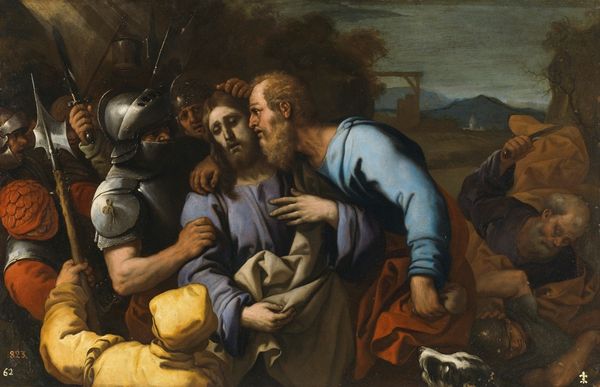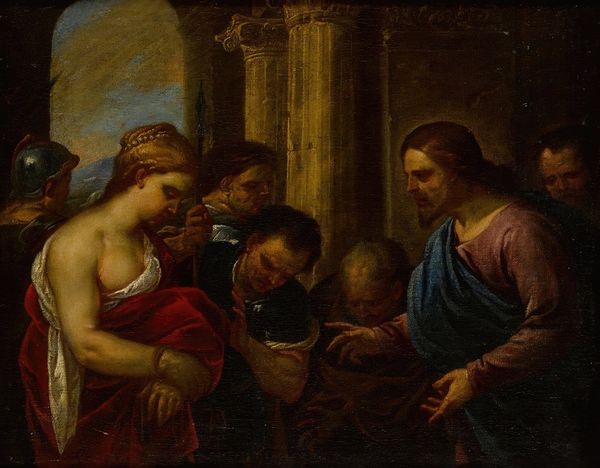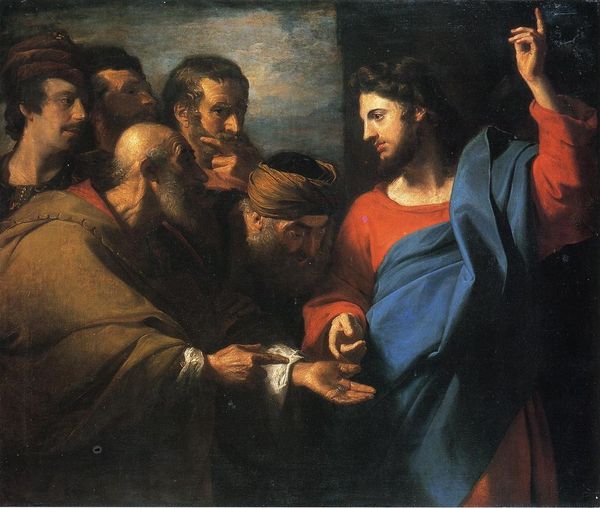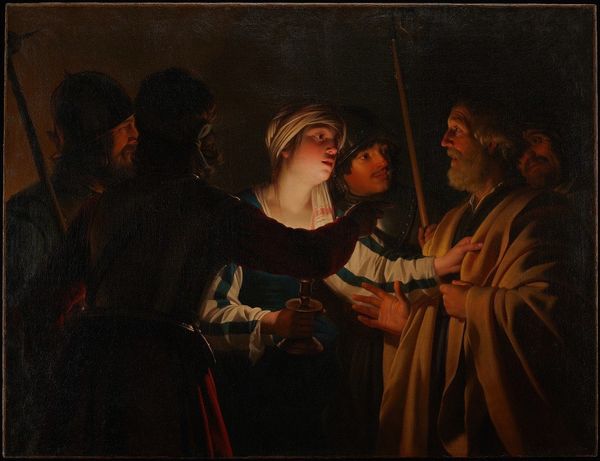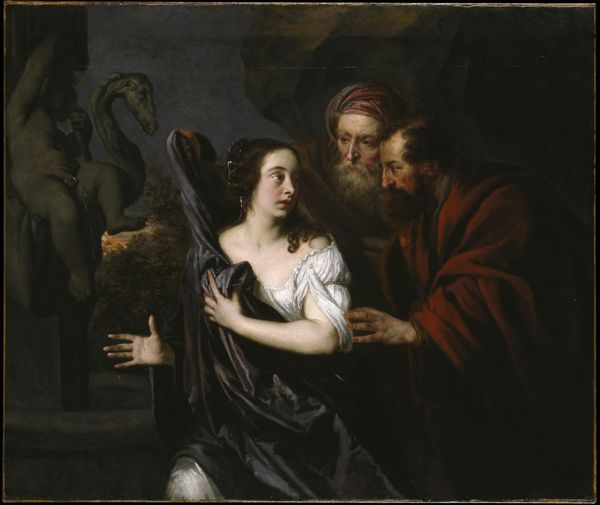
painting, oil-paint
#
portrait
#
baroque
#
painting
#
oil-paint
#
figuration
#
chiaroscuro
#
history-painting
#
italian-renaissance
#
realism
Copyright: Public Domain: Artvee
Curator: It’s quite somber, isn't it? That heavy darkness just dominates. Editor: Indeed. What we're looking at is "The Denial of Saint Peter," rendered around 1610 by the Baroque master, Caravaggio. The scene depicts the biblical moment when Peter denies knowing Christ. Curator: The symbolic weight here is immense, particularly considering the cultural context of Peter's role. The soldier's armor, that glint of light... they serve as potent reminders of the earthly powers at play during the Passion. Don't you think they act almost like instruments of fate here? Editor: Absolutely. And if we consider the gendered power dynamics of the scene, it’s quite revealing. Notice how the woman's gaze pierces Peter, holding him accountable while his posture speaks to shame. Caravaggio masterfully frames the social pressure—Peter isn't just denying Christ, but performing a very gendered dance of self-preservation. The performativity is key, isn’t it? Curator: It's compelling. His guilt seems to emanate from the core of his being. That single, dramatic spotlight captures that psychological breakdown; a really timeless representation of inner turmoil, I'd say. Editor: Agreed. The contrast is striking. In terms of identity politics, the scene stages a crisis—between loyalty and self-interest, spiritual devotion and social survival, challenging dominant religious narratives and suggesting a more complex reading of heroism, and very raw depiction of human vulnerability and the inherent contradictions that exist within social structures. Curator: Thinking about it from a theological standpoint, the image has layers upon layers. The shadow, of course, has strong references to the darkness that descends upon someone as they go through an event as impactful as betraying the Christ, betraying his friend. The shadow follows you. Editor: I hadn’t thought about it from a purely spiritual perspective like that. But from where I am standing, it reinforces for me how the art of that period remains politically potent when we recognize those nuances and challenge traditional readings of sacred narratives. Curator: A beautiful intersection we are each bringing to the work! I will look at it in a new light after our discussion. Editor: Exactly, those perspectives allow us to excavate rich insights from the artwork that resonate far beyond its initial creation.
Comments
No comments
Be the first to comment and join the conversation on the ultimate creative platform.

